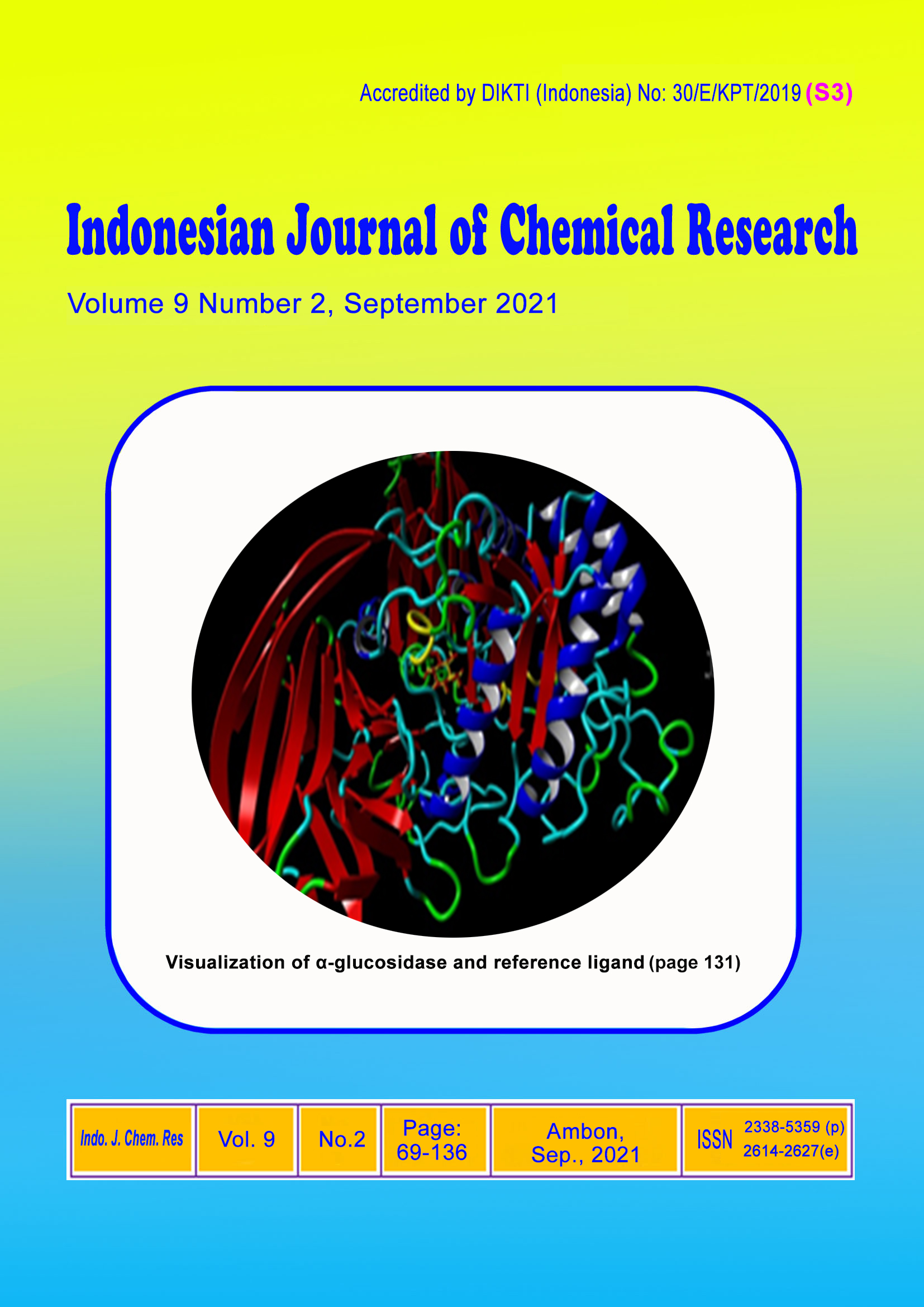Isolation of Lycopene Component from Tamarillo (Solanum betaceum)
Abstract
Lycopene is a red pigment found in tamarillo with its function as an antioxidant that protects body cells from the negative effects of free radicals so that they do not trigger diseases, especially cancer and premature aging. This study was intended to improve the quality of tamarillo by isolating lycopene from tamarillo through an extraction process with chloroform as a solvent by maceration for 3 days at room temperature. The lycopene extract obtained was dissolved by means of a rotary evaporator at 40 oC under vacuum pressure and oven temperature at 60 oC. The lycopene obtained was analyzed by Gas Chromatography-Mass Spectrometry and the crystal structure of lycopene was characterized by Fourier Transform Infra-Red Spectroscopy. GCMS results showed that 0.21 g of lycopene was successfully isolated from 100 g of dried red tamarillo fruit powder. Functional group analysis using FT-IR at a wavelength of 978.23 cm-1 showed the R-CH=CH-R group; the -CH3- group of 1371.43 cm-1; the 1460.16 cm-1 indicates the bending vibration of -CH2-; the C=C chain of 1656.91 and 1745.64 cm-1; and the C-H of 2856.67 and 2926.11 cm-1 of the lycopene chain.
Downloads
Copyright (c) 2021 Jeanne Dewi Damayanti, Ririn Azmilia, Zul Ainun, Nur Amin R., M. Ilham Nurdin

This work is licensed under a Creative Commons Attribution-NonCommercial-NoDerivatives 4.0 International License.
Authors who publish with this journal agree to the following terms:
- Copyright on any article is retained by the author(s).
- The author grants the journal, the right of first publication with the work simultaneously licensed under a Creative Commons Attribution License that allows others to share the work with an acknowledgment of the work’s authorship and initial publication in this journal.
- Authors are able to enter into separate, additional contractual arrangements for the non-exclusive distribution of the journal’s published version of the work (e.g., post it to an institutional repository or publish it in a book), with an acknowledgment of its initial publication in this journal.
- Authors are permitted and encouraged to post their work online (e.g., in institutional repositories or on their website) prior to and during the submission process, as it can lead to productive exchanges, as well as earlier and greater citation of published work.
- The article and any associated published material is distributed under the Creative Commons Attribution-NonCommercial-NoDerivatives 4.0 International License.






_copy1.png)










